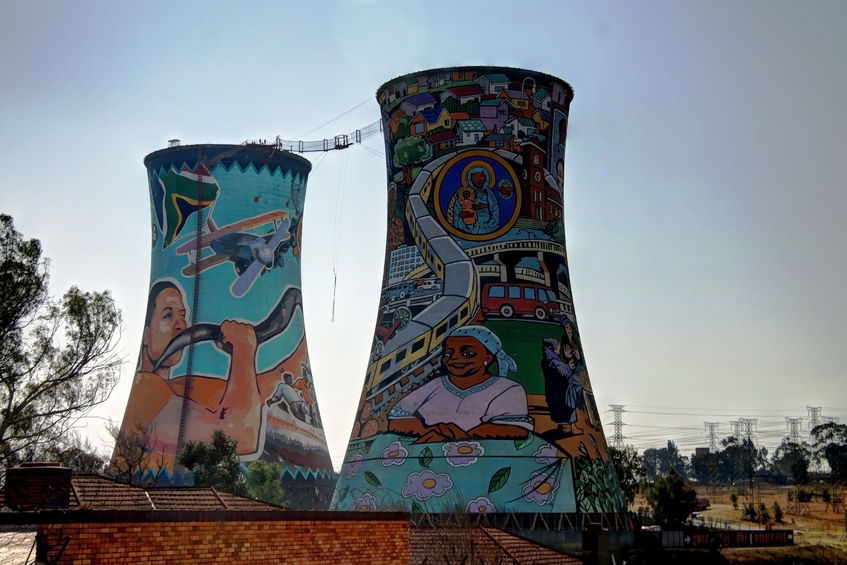African currencies were in the spotlight after some of the top central banks delivered their interest rate decisions. Most of them also reacted to the decision by the Federal Reserve to deliver a jumbo interest rate cut last week. Here are some of the most notable currencies.
South African rand | ZAR
The South African rand has been one of the best-performing currencies this year, helped by the political and economic situation in the country.
The USD/ZAR exchange rate dropped to 17.40, its lowest point since February 2023, and down by over 12% from its highest level this year.
This price action happened as the US dollar index retreated following the Federal Reserve’s 0.50% rate cut and the view that it will continue cutting rates.
In its decision last week, the South African Reserve Bank (SARB) decided to cut interest rates by 0.25% for the first time since 2020. It did that after a report showed that the country’s inflation dropped to below 4.5% in August.
South Africa’s inflation has dropped because of the strong currency, which has made it cheaper to import crude oil and other items.
Additionally, the currency has done well because of the political settlement between the ANC and the DA parties which has led to some stability in the country.
The load-shedding rate has decreased while business and consumer confidence has increased, which has attracted some foreign capital to the country.
Additionally, the South African rand has done well because of higher gold prices. While production has fallen in the past few decades, it remains an important resource. Data shows that it produced 110 metric tons of gold in 2023 worth over $9.26 billion.
Therefore, the USD/ZAR pair will likely continue falling in the coming weeks as traders target the next key support point at 17.
Zimbabwe ZiG | ZWD
The Zimbabwe ZiG currency came under intense pressure, forcing the central bank to intervene.
The official USD to ZIG pair was trading at 13.97 on Monday, according to the central bank. However, the black market rate was trading at 26.
The currency has dropped sharply because of the ongoing economic crisis in the country. A severe drought is going on, which has led to more demand for dollars.
In an opinion in a local daily, the central bank governor hinted that the bank would continue intervening to ensure its stability. He said:
“The interventions are also aimed at smoothening transitory foreign currency supply and demand mismatches caused by timing differences in the realization of foreign exchange inflows and outflows.”
The Zimbabwe ZiG was launched in April after the RTGS currency imploded by over 80% in the first three months of the year. It is a unique currency that is backed by over $375 million, which is made up of gold and the US dollar.
The biggest challenge for the currency is the low confidence among individuals and businesses because of the last five currency failures. Many people still believe that the currency will follow the path of the previous ones.
As a result, Zimbabwe has transformed into a mostly US dollar country since the currency is used to handle most of the transactions. Most people and businesses often save in US dollars to prevent forex volatility risks.
Nigerian naira | NGN
The Nigerian naira has been one of the worst-performing currencies in Africa. Unlike the South African rand, the naira has plunged by over 426% since 2017.
Nigeria’s economy has mostly struggled because of decades of mismanagement, corruption, and plunder of natural resources.
The Nigerian naira crash accelerated last year after the new government removed most of the existing subsidies in a bid to save over $10 billion annually.
At the same time, the government engineered a currency devaluation to bridge the gap between the official and the black market rate. That devaluation led to a double-digit crash within a day.
Like in Zimbabwe, most Nigerians have given up on the local currency and moved to the US dollar and other foreign currencies. This explains why the naira has crashed even after the central bank hiked rates to the highest level in years.
The Nigerian naira jumped sharply last week as traders reacted to the Federal Reserve decision. Analysts expect that Nigeria will see some dollar inflows from global investors seeking a higher return on their investments.
Looking ahead, the next key catalyst for the Nigerian naira will be this week’s Central Bank of Nigeria (CBN) interest rate decision. Analysts expect that the bank will either leave rates unchanged or decide to hike them again.
On the positive side, Nigeria’s inflation has eased a bit recently, helped by the government’s decision to lower taxes on imported food items.
Therefore, there is a likelihood that the Nigerian naira will continue rising, since, as I wrote before, the USD/NGN pair has formed a double-top chart pattern, which is often a sign of a bearish breakout.
The post Africa forex update: Zimbabwe ZiG, South African rand, Nigerian naira appeared first on Invezz

